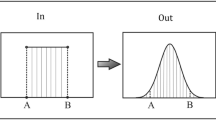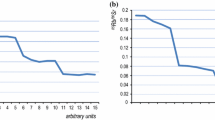Abstract
Accurate and precise measurement of isotopic ratio of stable isotopes for establishing the traceability is essential for its wide applications such as geological survey, food authentication, geographical origin and environment. Now a days, it has been extensively used due to development of sophisticated instrument with improved technologies and established methods/procedures. According to the International Committee for Weights and Measures (CIPM) in 2015, the isotope ratio or delta value could be achieved by an internationally inter comparison following an established method/procedure. And the isotope ratio or delta value assignment can be realized by comparing with a certified value of an Isotopic Reference Materials (IRMs) so as to get the comparable as well as traceable isotope amount ratio value. The major lacuna faced during the isotopic ratio measurement is due to the instrumental mass fractionation and mass discrimination, which affect to the ultimate result of the isotopic ratio. Various artifact standards and IRMs are used to rectify these mass discrimination and mass fractionation. Though, several IRMs have been developed by the National Metrology Institutes (NMIs) which are used to establish traceability linkage to the SI unit for the measurement of isotope amount ratio; however, availability of IRMs to develop traceability for the routine measurement of isotopic ratio is still a major issue. The present paper is focused mainly on the measurement and traceability issues in the isotope amount ratio determination and the availability of various isotopic reference materials.


Similar content being viewed by others
References
T. Hoppa, M. Fischer-Goddea and T. Klein, Ruthenium stable isotope measurements by double spike MC-ICPMS. J. Anal. At. Spectrom., 31 (2016) 1515–1526.
C. Paton, M. Schiller, D. Ulfbeck and M. Bizzarro, High-precision 27Al/24Mg ratio determination using a modified isotope-dilution approach. J. Anal. At. Spectrom., 27 (2012) 644–652.
X. Ma, Y.G. Yin, J.B. Shi, J.F. Liu and G.B. Jiang, Species-specific isotope dilution-GC-ICP-MS for accurate and precise measurement of methylmercury in water, sediments and biological tissues. Anal. Methods, 6 (2014) 164–169.
L.E. Morgan, D.P.S. Ramos, B. Davidheiser-Kroll, J. Faithfull, N.S. Lloyd, R.M. Ellam and J.A. Higgins, High-precision 41K/39K measurements by MC-ICP-MS indicate terrestrial variability of δ41K. J. Anal. At. Spectrom., 33 (2018) 175–186.
W.A. Brand, T.B. Coplen, J. Vogl, M. Rosner and T. Prohaska, Assessment of international reference materials for isotope-ratio analysis (IUPAC Technical Report). Pure Appl. Chem., 86 (2014) 425–467.
H.C. Urey, H.A. Lowenstam, S. Epstein and C.R. McKinney, Measurement of Paleotemperatures and Temperatures of the Upper Cretaceous of England, Denmark, and the Southeastern United States. Geol. Soc. Am. Bull., 62 (1951) 399.
I. Friedman, J. O’Neil and G. Cebula, Two New Carbonate Stable-Isotope Standards. Geostand. Newslett., 6 (1982) 11.
T.B. Coplen, Discontinuance of SMOW and PDB. Nature, 375 (1995) 285.
G. Hut. Consultants’ Group Meeting on Stable Isotope Reference Samples for Geochemical and Hydrological Investigations: IAEA, Vienna 16–18 September 1985: Report to the Director General, International Atomic Energy Agency, 1987.
J. Vogl, M. Rosner, S.A. Kasemann, R. Kraft, A. Meixner, J. Noordmann, S. Rabb, O. Rienitz, J.A. Schuessler, M. Tatzel and R.D. Vocke, Intercalibration of Mg isotope delta scales and realisation of SI traceability for Mg isotope amount ratios and isotope delta values. Geostand. Geoanal. Res., 44 (2020) 439–457.
B. Brandt, J. Vogl, J. Noordmann, A. Kaltenbach and O. Rienitz, Preparation and characterization of primary magnesium mixtures for the ab initio calibration of absolute magnesium isotope ratio measurements. J. Anal. At. Spectrom., 31 (2016) 179–196.
J. Vogl, B. Brandt, J. Noordmann, O. Rienitz and D. Malinovskiy, Characterization of a series of absolute isotope reference materials for magnesium: Ab initio calibration of the mass spectrometers, and determination of isotopic compositions and relative atomic weights. J. Anal. At. Spectrom., 31 (2016) 1440–1458.
A. Schimmelmann, H. Qi, T. B. Coplen, W. A. Brand, J. Fong, W. Meier-Augenstein, H. F. Kemp, B. Toman, A. Ackermann, S. Assonov, A. T. Aerts-Bijma, R. Brejcha, Y. Chikaraishi, T. Darwish, M. Elsner, M. Gehre, H. Geilmann, M. Gr¨oning, J. F. H´elie, S. Herrero-Mart´ın, H. A. J Meijer, P. E. Sauer, A. L. Sessions, R. A. Werner. Organic reference materials for hydrogen, carbon, and nitrogen stable isotope-ratio measurements: caffeines, n-alkanes, fatty acid methyl esters, glycines, l-valines, polyethylenes, and oils. Anal. Chem., 2016, 88, 4294–4302.
G. Skrzypek, Normalization procedures and reference material selection in stable HCNOS isotope analyses: An overview. Anal. Bioanal. Chem., 405 (2012) 2815–2823.
P. Szpak, J. Z. Metcalfe, R. A. Macdonald. Best practices for calibrating and reporting stable isotope measurements in archaeology. J. Arch. Sci. Reports. 2017,13, 609–616.
J. Vogl, The triple-isotope calibration approach: a universal and standard-free calibration approach for obtaining absolute isotope ratios of multi-isotopic elements. Anal. Bioanal. Chem., 413 (2021) 821–826.
K.G. Heumann, S.M. Gallus, G. Radlinger and J. Vogl, Precision and accuracy in isotope ratio measurements by plasma source mass spectrometry. J. Anal. At. Spectrom., 13 (1998) 1001–1008.
J. Vogl and W. Pritzkow, Isotope reference materials for present and future isotope research. J. Anal. At. Spectrom., 25 (2010) 923–932.
T.B. Coplen, Guidelines and recommended terms for expression of stable-isotope-ratio and gas-ratio measurement results. Rapid Commun. Mass Spectrom., 25 (2011) 2538–2560.
H.C. Urey, Oxygen isotopes in nature and in the laboratory. Science, 108 (1948) 489–496.
W.A. Brand and T.B. Coplen, Stable isotope deltas: tiny, yet robust signatures in nature. Isotopes Environ. Health Studies, 48 (2012) 393–409.
R.A. Werner and W.A. Brand, Referencing strategies and techniques in stable isotope ratio analysis. Rapid Commun. Mass Spectrom., 15 (2001) 501–519.
S.S. Tripathy, S. Gupta, D. Mishra, P.K. Yadav, S. Raina, R.K. Saxena, N. Singh, N. Singh, M.J. Kulshrestha, V.N. Ojha and R.K. Kotnala, Need of alcohol reference materials and reliable measurement of alcohol content by breath alcohol analyzer in India: An overview. MAPAN, 35 (2020) 111–115.
Swati, S. S. Tripathy, R. K. Saxena and P. K. Gupta. Development and validation of method with evaluation of measurement uncertainty for the speciation analysis of chromium by ion chromatography. MAPAN 2015, 30, 131–137.
S. S. Tripathy, Swati, R. K. Saxena and N. Singh. Determination of trace elements in high purity silver granules using sector field inductively coupled plasma mass spectrometry. J. Test. Eval., 2018, 46, 1489–1497.
S. S. Tripathy, Swati, P. Chauhan, R. K. Saxena, S. Raina, and N. Singh. Precise and accurate determination of isotopic abundance ratio of 107Ag/109Ag in silver granules by sector field inductively coupled plasma mass spectrometry. 9th International Conference AdMet-2016, CSIR-NPL.
ISO, International vocabulary of basic and general terms in metrology, 2nd edn. International Standardisation Organisation, Geneva (1993).
Ph. Quevauviller, Traceability of environmental chemical measurements. Trends Anal. Chem., 23 (2004) 171–177.
P. De Bie’vre, Isotope dilution mass spectrometry: what can it contribute to accuracy in trace analysis? Fresenius’ J. Anal. Chem., 337 (1990) 771–766.
P. De Bièvre, R. Dybkær, A. Fajgelj and D.B. Hibbert, Metrological traceability of measurement results in chemistry: Concepts and implementation (IUPAC Technical Report). Pure Appl. Chem., 83 (2011) 1873–1935.
A.O. Nier, A Redetermination of the Relative Abundances of the Isotopes of Carbon, Nitrogen, Oxygen, Argon, and Potassium. Phys. Rev., 77 (1950) 789–793.
D. Paul, G. Skrzypek, I. F´orizs. Normalization of measured stable isotopic compositions to isotope reference scales - a review. Rapid Commun Mass Spectrom., 2007, 21, 3006–3014.
S. Geilert, J. Vogl, M. Rosner, S. Voerkelius and T. Eichert, Boron isotope fractionation in bell pepper. Mass Spectrom. Purif. Tech., 1 (2015) 101.
G. Faure and T. M. Mensing. Isotopes—Principles and Applications 3rd edn (Hoboken: Wiley), 2005.
T. Catterick, B. Fairman and C. Harrington, Structured approach to achieving high accuracy measurements with isotope dilution inductively coupled plasma mass spectrometry. J. Anal. At. Spectrom., 13 (1998) 1009–1013.
CIAAW 2018 Commission on Isotopic Abundances and Atomic Weights (www.ciaaw.org); Commission on Isotopic Abundances and Atomic Weights of the International Union of Pure and Applied Chemistry, Research Triangle Park, USA. https://www.ciaaw.org/atomic-weights.htm
A.O. Nier, The isotopic constitution of strontium, barium, bismuth, thallium and mercury Phys. Rev., 5 (1938) 275.
L. Yang, Accurate and precise determination of isotopic ratios by MC-ICP-MS: A review. Mass Spectrom. Rev., 28 (2009) 990–1011.
R. Millot, C. Guerrot and N. Vigier, Accurate and high-precision measurement of lithium isotopes in two reference materials by MC-ICP-MS. Geostand. Geoanal. Res., 28 (2004) 153–159.
S.A. Kasemann, A.B. Jeffcoate and T. Elliott, Lithium isotope composition of basalt glass reference material. Anal. Chem., 77 (2005) 5251–5257.
T.I. Platzner, Modern Isotope Ratio Mass Spectrometry. Wiley, Chichester (1997).
H. Andren, I. Rodushkin, A. Stenberg, D. Malinovsky and D.C. Baxter, Sources of mass bias and isotope ratio variation in multi-collector ICP-MS: optimization of instrumental parameters based on experimental observations. J. Anal. At. Spectrom., 19 (2004) 1217–1224.
F. Vanhaecke and P. Degryse, MC-ICPMS in Isotopic Analysis: Fundamentals and Applications Using ICP-MS. Wiley-VCH Verlag GmbH & Co, Weinheim (2012).
L. Yang, S. Tong, L. Zhou, Z. Hu, Z. Mester and J. Meija, A critical review on isotopic fractionation correction methods for accurate isotope amount ratio measurements by MC-ICP-MS. J. Anal. At. Spectrom., 33 (2018) 1849–1861.
W.A. Russell, D.A. Papanastassiou and T.A. Tombrello, Ca isotope fractionation on the Earth and other solar system materials. Geochim. Cosmochim. Acta, 42 (1978) 1075–1090.
H. Isnard, R. Brennetot, C. Caussignac, N. Caussignac and F. Chartier, Investigations for determination of Gd and Sm isotopic compositions in spent nuclear fuels samples by MC ICPMS. Int. J. Mass Spectrom., 246 (2005) 66–73.
D.M. Chew, P.J. Sylvester and M.N. Tubrett, U-Pb and Th–Pb dating of apatite by LA-ICPMS. Chem. Geol., 280 (2011) 200–216.
W. Zheng, D. Foucher and H. Hintelmann, Mercury isotope fractionation during volatilization of Hg (0) from solution into the gas phase. J. Anal. At. Spectrom., 22 (2007) 1097–1104.
L. Yang and R.E. Sturgeon, High accuracy and precision isotope dilution mass spectrometry: An application to the determination of Mo in seawater. J. Anal. At. Spectrom., 24 (2009) 1327–1335.
Z. Zhu, J. Meija, A. Zheng, S.Y. Tong, L. Zhou and L. Yang, Determination of the Isotopic Composition of Osmium Using MC-ICPMS. Anal. Chem., 90 (2018) 9281–9288.
J. Irrgeher, T. Prohaska, R.E. Sturgeon, Z. Mester and L. Yang, Determination of strontium isotope amount ratios in biological tissues using MC-ICPMS. Anal. Methods, 5 (2013) 1687–1694.
D. Vance and M. Thirlwall, An assessment of mass discrimination in MC-ICPMS using Nd isotopes. Chem. Geol., 185 (2002) 227–240.
A.L. Buchachenko, Magnetic Isotope Effect: Nuclear spin control of chemical reactions. J. Phys. Chem. A, 105 (2001) 9995–10011.
M.E. Wieser and J.R. de Laeter, A preliminary study of isotope fractionation in molybdenites. Int. J. Mass Spectrom., 225 (2003) 177–183.
J. Wang, T. Ren, H. Lu, T. Zhou and M. Zhao, Absolute isotopic composition and atomic weight of selenium using multi-collector inductively coupled plasma mass spectrometry. Int. J. Mass Spectrom., 308 (2011) 65–70.
J. Yoshinaga, M. Morita and J.S. Edmonds, Determination of copper, zinc, cadmium and lead in a fish otolith certified reference material by isotope dilution inductively coupled plasma mass spectrometry using off-line solvent extraction. J. Anal. At. Spectrom., 14 (1999) 1589–1592.
J.D. Fasset and P.J. Paulsen, Isotope dilution mass spectrometry for accurate elemental analysis. Anal. Chem., 61 (1989) 643A-649A.
I. Papadakis, P.D.P. Taylor and P. De Bie’vre, Establishing an SI-traceable copper concentration in the candidate reference material MURST ISS A1 Antarctic sediment using isotope dilution applied as a primary method of measurement. J. Anal. At. Spectrom., 12 (1997) 791–796.
Acknowledgements
Authors are thankful to the Director, NPL for giving permission to publish this article. The authors Praveen Kumar Yadav is thankful to the UGC and CSIR, India for providing fellowship to carry out the research. Praveen Kumar Yadav is also thankful to AcSIR for the support and encouragement.
Author information
Authors and Affiliations
Corresponding author
Additional information
Publisher's Note
Springer Nature remains neutral with regard to jurisdictional claims in published maps and institutional affiliations.
Rights and permissions
About this article
Cite this article
Yadav, P.K., Kochar, C., Taneja, L. et al. Measurement and Traceability Issues in Isotope Amount Ratio Determination of Stable Isotopes. MAPAN 37, 227–235 (2022). https://doi.org/10.1007/s12647-021-00513-6
Received:
Accepted:
Published:
Issue Date:
DOI: https://doi.org/10.1007/s12647-021-00513-6




